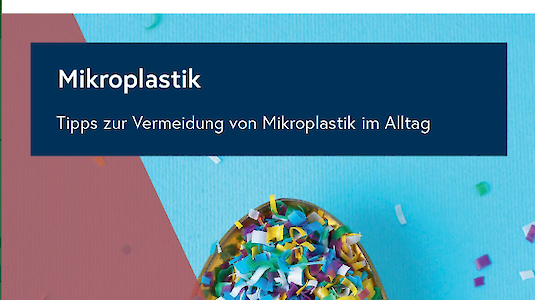Inconspicuous but still dangerous - microplastics!
Plastics are omnipresent in our everyday lives. A brochure sheds light on the effects of microplastics on people and the environment and provides valuable tips on how to avoid them.
Today, microplastics can be found everywhere in nature via various pathways: in oceans and rivers, in deep-sea sediments, in agricultural soils, on glaciers, in Arctic snowflakes and in various organisms. Microplastics can be ingested orally through the consumption of fish and seafood. In a study conducted by the Federal Environment Agency and the Medical University of Vienna in 2018, microplastics were detected in human faeces for the first time - however, the effects on humans are still unclear.
Avoiding microplastics in everyday life
So-called primary microplastics are intentionally added to products such as cosmetics, cleaning agents or paints and end up in the sewage system with the rinsing water. Far more problematic are secondary microplastic particles, which are produced by tyre abrasion, fibre abrasion during the washing of textiles or the decomposition of packaging, for example. Other entry paths include artificial turf pitches and releases from construction sites.
The Organisation for Economic Co-operation and Development (OECD) reports that of the approximately 353 million tonnes of plastic waste produced each year (2019), only 9% is recycled and 19% is properly incinerated - the rest ends up in the environment and breaks down into ever smaller pieces. By 2060, this amount will triple again to 1,014 million tonnes. The responsible handling and disposal of plastics is therefore crucial.
In order to reduce the amount of microplastics entering the environment, the Austrian action plan was developed with a package of measures.
Brochure on microplastics
In this context, the Environment Department has published a brochure on microplastics together with the ‘Umweltberatung’. The brochure contains information on bioplastics, the effects of microplastics on humans, animals and the environment, as well as helpful tips on how to avoid microplastics in various areas of everyday life. You will also find the new regulatory measures at EU level at the end of the brochure.
You can download the brochure free of charge at https://www.bmluk.gv.at/service/publikationen/klima-und-umwelt/aktionsplan-mikroplastik-2022-2025.html.
